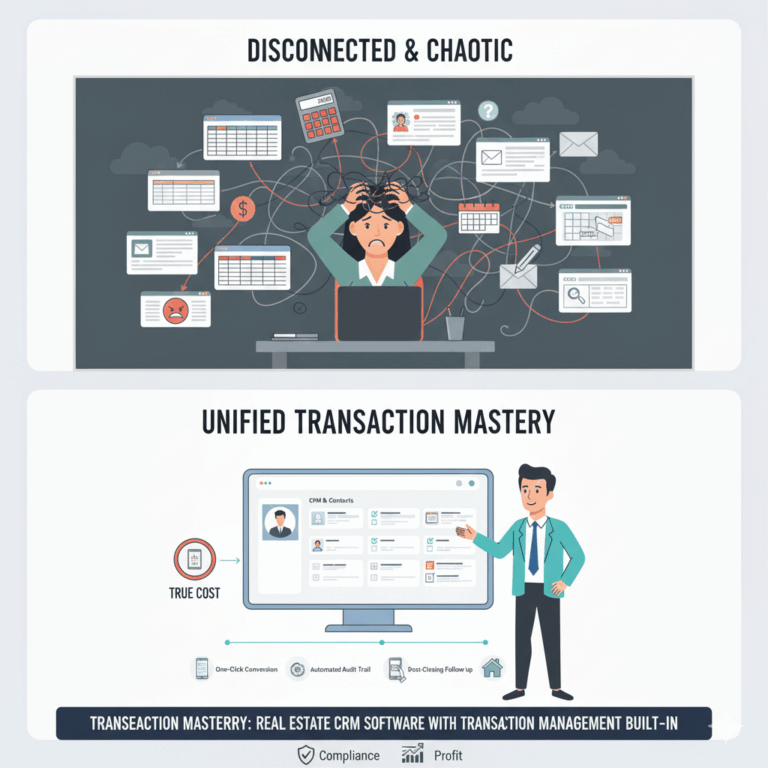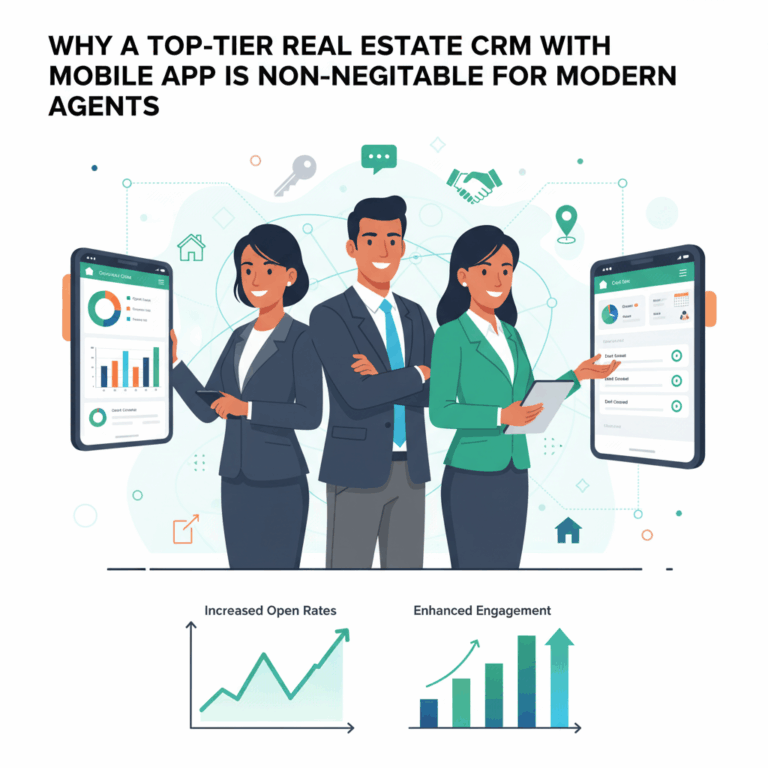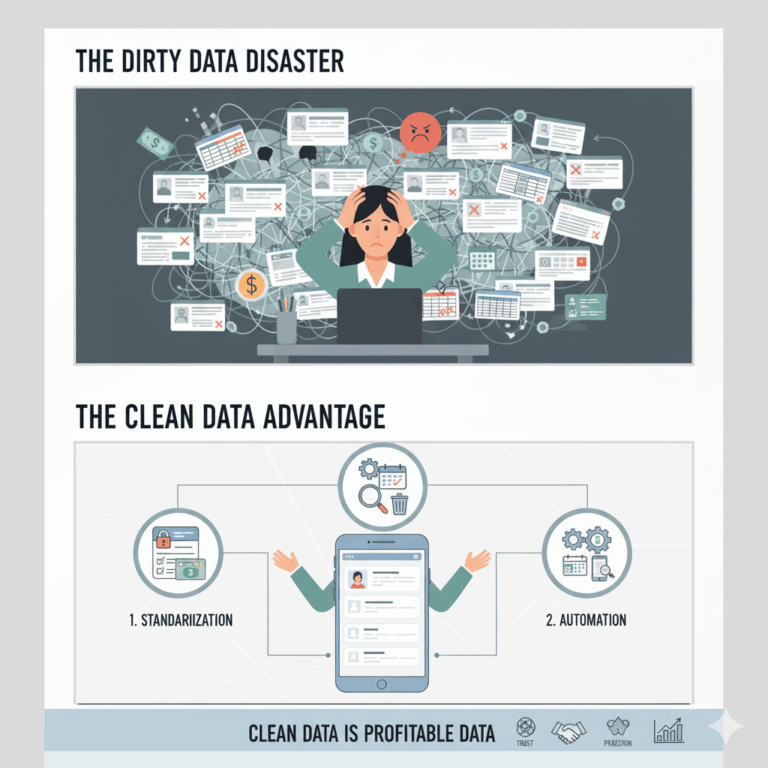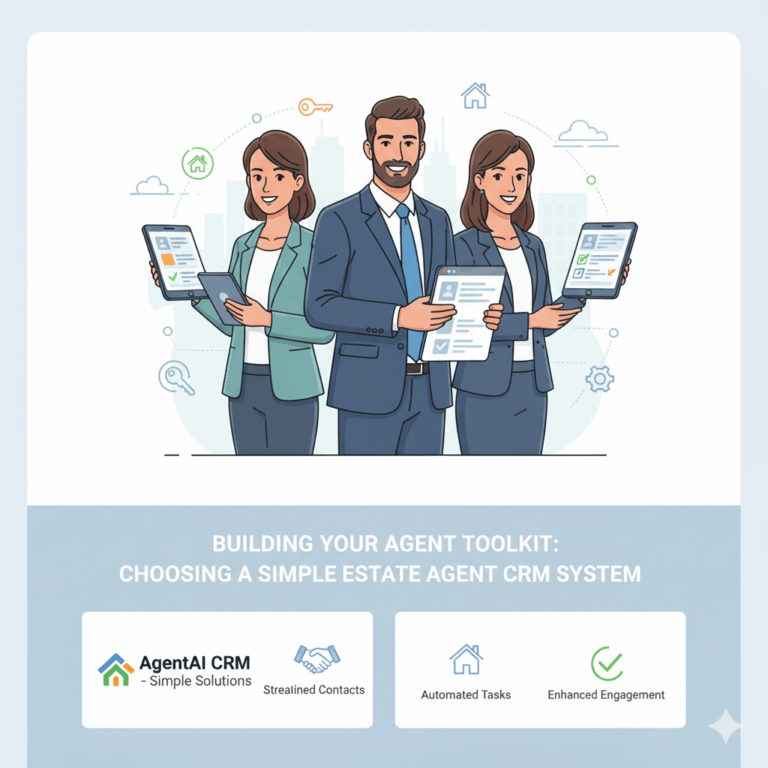Mastering Your Lead Nurturing Strategy: Automated Follow-Up Campaigns for Real Estate Agents
In real estate, leads are not a single event; they are a long-term relationship. The vast majority of people who inquire about a property or download a guide are not ready to buy or sell today. They are researching, planning, and waiting for the right moment—a moment that might be 60 days, 6 months, or even 2 years away. This period of waiting is where most agents fail, and it’s precisely why having a formalised, efficient lead nurturing strategy is non-negotiable for success and long-term profitability.
A strong lead nurturing strategy involves consistently delivering personalized, valuable content to a prospect over time, keeping you top-of-mind so that when they are finally ready to act, you are the only agent they call. This isn’t manual work; it’s accomplished through carefully designed, automated campaigns within your CRM. This automated approach ensures your pipeline is constantly fed with qualified prospects ready to move.
Here are the three essential automated follow-up campaigns every modern real estate agent needs to set up to ensure no valuable lead ever goes cold and to establish a consistent, professional brand presence.
Mastering Your Lead Nurturing Strategy Through Automation
The fundamental challenge for any successful lead nurturing strategy is maintaining persistence without becoming annoying. The answer is not simply emailing more often, but using automation and segmentation to deliver the right message at the right time. By leveraging your CRM, you can create customized client journeys for different types of leads (buyers vs. sellers, hot vs. cold), ensuring they receive relevant content exactly when they need it. This systematic approach transforms sporadic, manual follow-up into a professional, continuous engagement engine that works 24/7.
Campaign 1: The “New Lead” Instant Response & Qualification Campaign
This is the most critical campaign. Its sole purpose is to assess the lead’s intent and provide immediate value within the first 48 hours of contact. Speed and relevance are everything here, as conversion rates drop drastically after the five-minute mark.
Automation Goal: Qualify, Engage, and Schedule Quickly
- Trigger: Any new inquiry from a portal (e.g., https://www.google.com/search?q=realestate.com.au), website form, or social media ad.
- Sequence Breakdown:
- Minute 1 (SMS/Text): Send an immediate, personal-sounding text message confirming receipt and stating you will call within the hour. This guarantees you beat 90% of the competition who rely on slower email replies. This quick action sets a professional expectation of service.
- Minute 5 (Email): Send a personalized email with a valuable resource related to their initial query (e.g., “The Top 5 Mistakes First-Time Buyers Make” or a specific suburb price report). The content should provide education and insight, not a direct sales pitch.
- Hour 1 (Call Task): Your CRM automatically creates a high-priority call task for you to personally follow up. If they don’t answer, the sequence moves to the next phase. Record the attempted call in the CRM notes immediately.
- Day 2 (Re-Engagement): Send a gentle, non-sales email asking which of the resources you sent was most helpful, or offering to set up a property alert tailored to their specific needs. This attempts to elicit a response and confirm their motivation level.
- The Key to Success: Every touchpoint in this phase must provide an easy way for the lead to “opt-out” of the heavy sequence or “raise their hand” for immediate contact. Once a lead engages with a second touchpoint, they move out of this high-intensity campaign and into a long-term track.
Campaign 2: The “Future-Paced” Long-Term Nurturing Campaign
This campaign is the true engine of any successful lead nurturing strategy. It’s designed for leads who are 3+ months out from buying or selling (often called “cold” or “warm” leads). The goal here is to build long-term trust and cement your position as the area expert without being pushy. This continuous drip of information ensures you are the first agent they think of when their timeline shifts.
Automation Goal: Authority, Trust, and Education Over Time
- Trigger: Leads who completed Campaign 1 but did not schedule an appointment, or those who specifically downloaded a generic asset like a “Market Report” or “Selling Timeline.”
- Sequence Breakdown (Monthly or Bi-Monthly is ideal):
- Month 1 (Market Insight): Send an exclusive local market update comparing price growth in their preferred suburb versus the state average. This provides data they can’t easily get elsewhere, positioning you as the data expert.
- Month 2 (Vendor Focus): If they are a potential seller, send a brief article titled, “3 Home Improvements That Guarantee a 10x ROI Before Listing.” If they are a buyer, send a local school or amenity guide. The content is tailored by segmentation.
- Month 3 (Client Spotlight): Send a brief success story or anonymized testimonial from a client you recently helped in their area. This builds social proof and credibility.
- Month 6 (Value Proposition Recap): Send an email detailing your unique value proposition—what you do differently from other agents in the area.
- Yearly Check-in: Schedule an annual or semi-annual task for you to send a personal video message or a custom property valuation report (CMA) to re-engage them. This high-touch point is critical for keeping cold leads warm.
- The Key to Success: Consistency is vital. This campaign must run automatically in the background, ensuring the lead receives valuable content from you on a reliable, expected schedule until they are ready to convert. Never stop providing value.
Campaign 3: The “Closed-Won” Referral and Review Campaign
The most lucrative part of your business comes from past clients. This campaign focuses on maximizing the value of those existing relationships, as your lead nurturing strategy doesn’t end when the sale closes; it pivots to focus on advocacy, loyalty, and passive lead generation.
Automation Goal: Reviews, Referrals, and Repeat Business
- Trigger: When a deal is moved to the “Closed-Won” status in the Transaction Management pipeline.
- Sequence Breakdown:
- Day 1 (Immediate): Send a warm, sincere “Thank You” email and SMS (with no sales pitch). Expressing gratitude and professionalism is paramount.
- Day 7 (Review Request): Send a friendly request for an online review, providing direct links to Google My Business or a third-party review site. Make it easy for them by including direct, clickable links.
- Day 30 (Settlement Check-in): A quick call or email checking to see how they are settling into their new home. This is a purely relational, high-touch point that reinforces your care.
- Month 11 (Home Anniversary): The CRM creates a task to send a personalized gift or a current property valuation report, ensuring you are top-of-mind before the one-year mark (a common time for referrals or considering an upgrade).
- Bi-Annual Market Update: Add them to a slow, exclusive list that only receives high-level market summaries (e.g., quarterly) to maintain contact without overwhelming their inbox.
- The Key to Success: This campaign ensures every happy client becomes a silent, long-term promoter of your brand, generating passive, high-quality referral leads for years to come.
Measuring and Refining Your Lead Nurturing Strategy
To ensure your lead nurturing strategy is not just busywork but a genuine source of revenue, you must constantly monitor key performance indicators (KPIs) using your CRM’s reporting tools.
- Open Rates and Click-Through Rates (CTR): These are your primary indicators of content health. High open rates and CTRs indicate your subject lines are engaging and your content is relevant and valuable. Low rates mean you need to segment your list further or improve your content quality.
- Unsubscribe Rate: A high unsubscribe rate signals that your content is either too frequent or irrelevant to the segment. Adjust the frequency or refine the segmentation rules.
- Conversion Rate from Campaign: This is the most important metric. Track how many leads move directly from a specific nurturing campaign (e.g., the “Future-Paced” track) into an active sales stage (e.g., “Viewing Booked” or “Listing Appointment Scheduled”). A high conversion rate validates your entire approach and justifies your investment in the CRM.
- Time-to-Conversion: Measure how long the average lead stays in the “Nurturing” stage before converting to “Active.” Use this data to refine your campaign duration and content schedule.
By implementing these three essential automated campaigns and rigorously tracking the results, you turn your CRM from a passive address book into an active, 24/7 engagement platform that guarantees you are present and relevant when your prospect finally decides, “Now is the time.” This systematic approach ensures your pipeline is constantly feeding itself with future business.
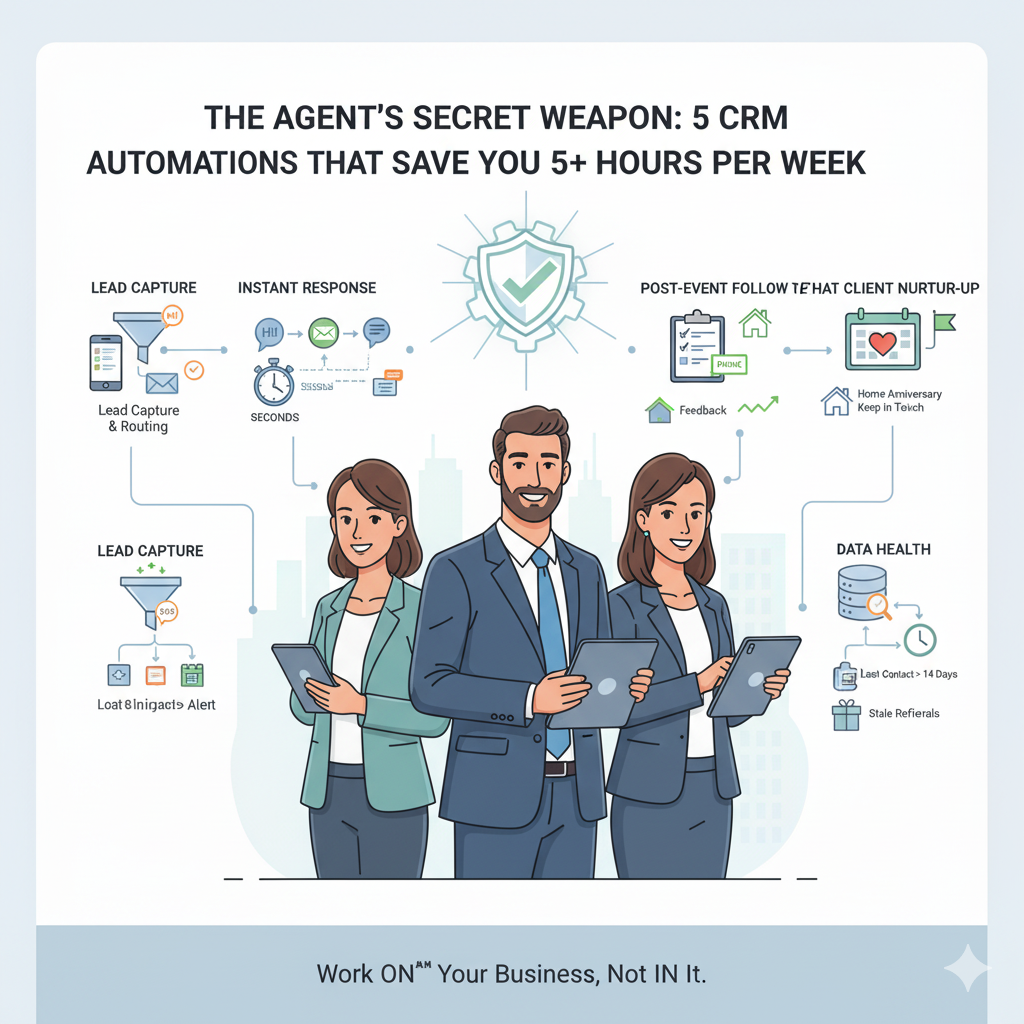
Lead response time benchmark article
automating bad data only magnifies integrity woes
CRM automations that power lead nurturing

